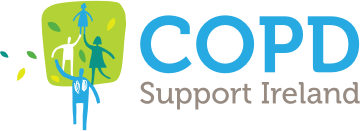 Some people with COPD will need to use Oxygen because they have low levels of oxygen in the blood. Tests for low blood oxygen levels include a fingertip probe, known as pulse oximetry, or a blood test taken from the artery in your wrist, called an ABG. If you have continually low levels of oxygen in your blood this can cause damage to organs such as the lungs and heart. To prevent this you may be prescribed home oxygen by your doctor.
Some people with COPD will need to use Oxygen because they have low levels of oxygen in the blood. Tests for low blood oxygen levels include a fingertip probe, known as pulse oximetry, or a blood test taken from the artery in your wrist, called an ABG. If you have continually low levels of oxygen in your blood this can cause damage to organs such as the lungs and heart. To prevent this you may be prescribed home oxygen by your doctor.
There are different types of home Oxygen equipment and your healthcare professional will help you decide which type will be best for you. If you are prescribed Oxygen
for use at home, it is called long term oxygen therapy or LTOT for short. When it is prescribed you will be told how long you are to use the oxygen for every day.
The equipment is designed to allow you to move freely around your home. Oxygen can also be prescribed to assist you when you are out and about. This is called ambulatory oxygen therapy or AOT and should be used as advised by your healthcare professional.
Oxygen may be prescribed when you are discharged from hospital and then discontinued once you have recovered from your current flare up. It is important to have a follow up appointment with your doctor, specialist physiotherapist or specialist nurse to check.
Home oxygen is a drug so it is important to use it as prescribed. Not using your oxygen can make you more unwell but so can using it incorrectly. It is especially important NOT to increase the oxygen dials on the equipment as this can cause serious side effects and will not help your COPD.
If you are prescribed home oxygen by your doctor it is important to remember the following safety tips:
- Look after your equipment and follow the instructions provided by your oxygen supplier.
- Do not expose your oxygen to naked flames or other heat sources.
- Do not smoke near oxygen equipment.
- Store oxygen equipment safely, your oxygen supplier will provide advice.
- If you are not using your oxygen, turn it off. Be especially careful not to leave oxygen tubing, with oxygen flowing through it, on beds, soft furnishings or even your lap.
- Ensure you have working smoke alarms and a fire extinguisher in your home.
Going abroad and air travel for patients with COPD

It is getting to that time of the year when many patients with COPD will be thinking about travelling abroad by plane. This can be quite stressful particularly for COPD patients requiring oxygen.
It is important to remember that the atmosphere in aeroplanes is not the same as it is at sea level. The air we normally breathe is made up of about 21% oxygen. However, the amount of oxygen in the air gets lower the higher up we go, e.g. up a mountain or on an aeroplane. However, aeroplanes are only pressurised down to a level of approximately 8000 feet (about 2400 metres) usually. This means that the air in aeroplanes is thinner and contains less oxygen than it would do at sea level. It is enough for people who do not have lung disease. But for patients with COPD who have oxygen levels that are borderline at sea level their oxygen levels will drop in the atmosphere inside a plane.
What does this mean for patients?
All patients with COPD might expect to experience more shortness of breath whilst moving around inside a plane. Consequently, it might be advisable to minimise movement on a plane limiting trips to the bathroom etc.
COPD patients who are breathless at sea level should talk to their respiratory nurse or doctor prior to taking an air trip. It may be necessary to do an oxygen assessment test prior to the airline trip to assess whether supplementary oxygen may be necessary on a flight. Unfortunately, the availability of these tests is limited and may take some time to arrange in any event.
If oxygen is required on a flight patients should contact their airline early preferably as soon as they make the booking. Most airlines can provide oxygen on most flights however they will require notification and will require a form to be completed. There may be a charge for this. The contact details for Irish airlines are as follows:
www.ryanair.com Special Assistance phone number (01) 582 5933
www.aerlingus.com Special Assistance phone number (01) 761 7839
Both Aer Lingus and Ryanair permit the use of approved portable oxygen concentrators. Again, airlines will require notification of this and a completed form. Portable oxygen cylinders can be used on buses, coaches and trains but cannot be used on aircraft. You should contact your oxygen supply company about this well in advance of leaving.
COPD patients who use oxygen and are going abroad should contact their oxygen supply company who may be able to suggest suppliers for oxygen delivery in the location abroad that they are going to.
Make sure you have enough medication with you. Remember to pack all medication and supplies in your carry-on luggage. Also keep a list of current medications with you at all times. If travelling within the European Union, make sure you get a European Health Insurance card. Contact your local health authority to request an EHIC. It is also available on line at: www.ehic.ie. It is also useful to have private health insurance particularly if going outside the European Union
It is still important to check the Covid regulations in the country you are travelling to still and of course get all your Covid boosters.
It might be best to try a holiday in Ireland first before traveling abroad just to check out what unanticipated problems you can occur. The most important thing is to plan well in advance.
Finally, do enjoy your holiday, you deserve a break
